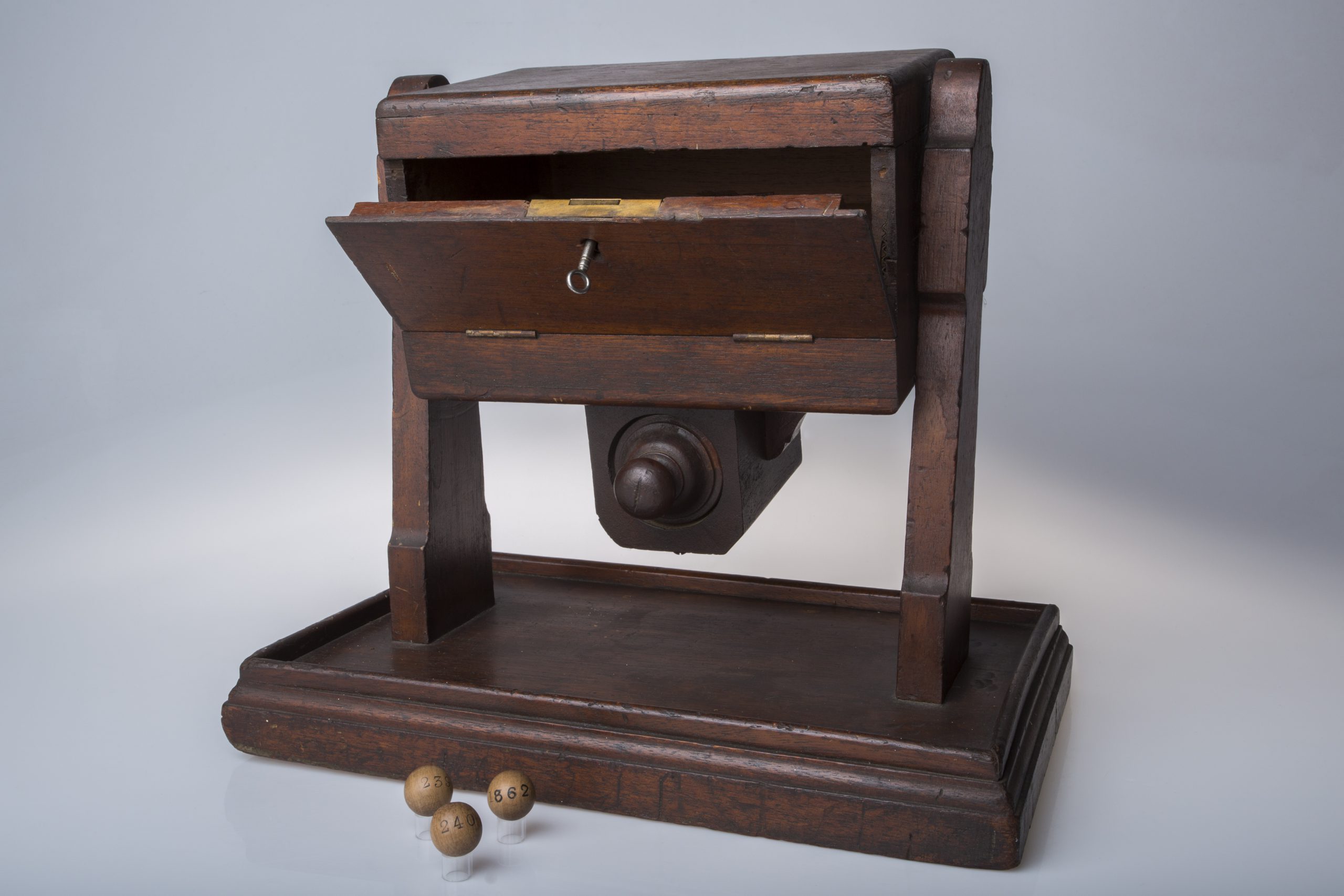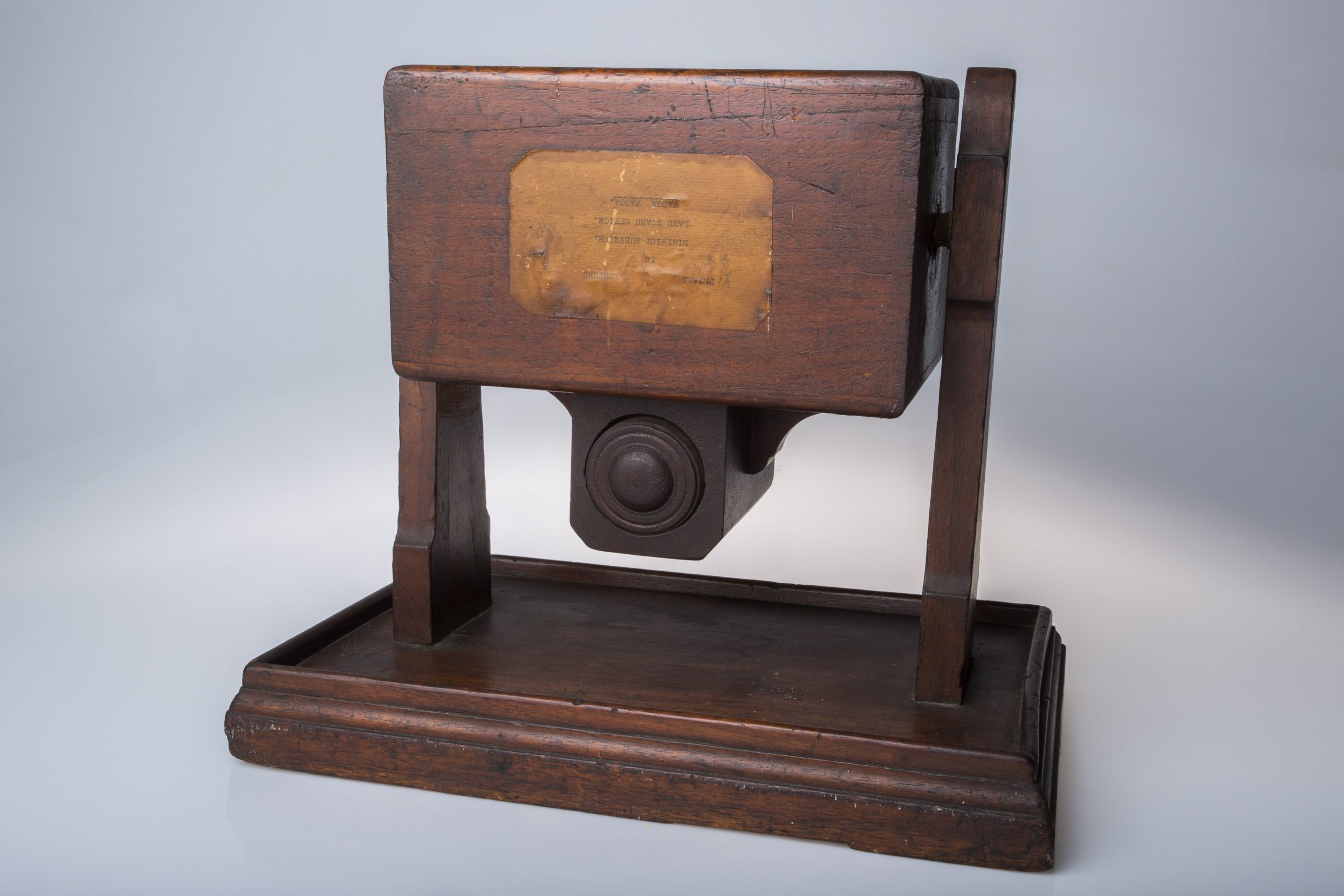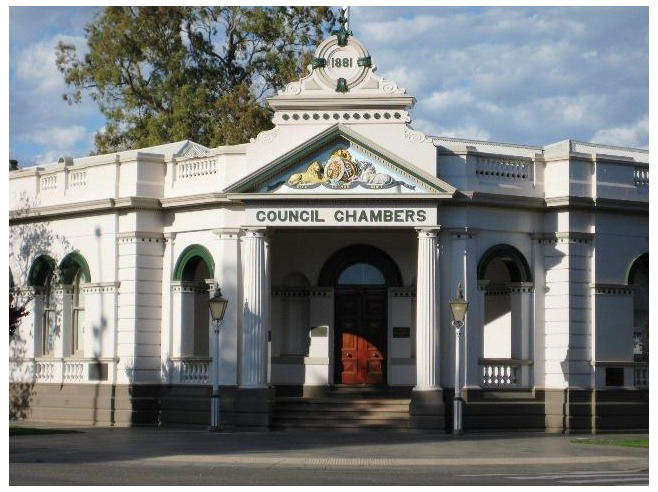The Lucky Ones
Allocating Soldier Settlement Land in the Riverina
Following WWI and WWII the NSW government allocated land to select returned soldiers, as part of post-war repatriation and reconstruction programs. For those eligible to receive soldier settlement land, and where the number of applications exceeded the number of blocks available, a ballot was conducted. The wooden ballot-box and marbles shown here were used by the NSW Lands Department to distribute soldier settlement blocks in the Riverina between 1919 and 1946.
In Australia, the idea of allocating soldier settlement land was devised during WWI to reassure men who volunteered for war that they would be cared for after it. It also evolved from the earlier conceived ideal of fostering economic and social development through the encouragement of yeoman – or small – farmers and farming communities. This idea dated from the mid-nineteenth century and led to the first closer settlement legislation in NSW in the early-1860s.
Soldier settlement land in NSW was allocated with assistance from the Commonwealth after both world wars. Land made available was Crown property or resumed from private landholders. Soldier settlement farms were purchased or leased by ex-servicemen with low interest loans. In addition to receiving land soldier settlers could apply for a monetary allowance, funded by the Commonwealth, to make farm ‘improvements’ such as buildings, land clearing, fencing, or the purchase of implements, stock or seed.
In the Riverina the first soldier settlement blocks were allocated during WWI at Tarcutta, south-east of Wagga Wagga. Other areas where returned servicemen were settled included Uranquinty, Toole’s Creek, Gregadoo and Marrar. The mixed success of the WWI soldier settlement scheme – including up to a third of men and families walking of their blocks – led to a revised approached after WWII. This followed an enquiry undertaken by the Commonwealth Government’s new Minister of Post War Reconstruction J B Chifley into post-WWI soldier settlement.
Among WWII soldier settlement allotments distributed in the Riverina were the East and West Wantabadgery estates near Gundagai, made in 1946 and 1948. Farms at both these locations were in high demand with 1561 men vying for thirteen blocks at East Wantabadgery, and 1023 men for sixteen blocks at West Wantabadgery. In both cases a ballot was held at the Department of Lands Office in Gundagai to determine the so-called ‘lucky ones’





